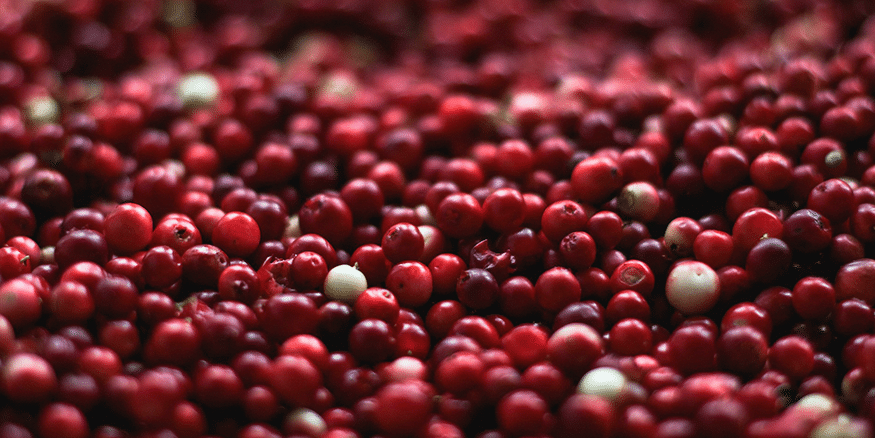
Cranberry and H. pylori
The cranberry, native to North America, long-known to be a remedy for urinary tract infections, now shows promise against Helicobacter pylori (H. pylori), the bacteria that cause stomach ulcers.
In the first clinical study of its kind, recent research shows that people who drink a cup of cranberry juice cocktail twice a day are three times more likely to ward off infection with the bacteria than those who do not. We first reported in The Inside Tract®, issue 122, November/December 2000, that researchers from Israel had demonstrated in the laboratory that cranberry’s bacterial anti-adhesion mechanism might be a new tool to fight ulcer disease. The focus of their findings centered on compounds within cranberries that are responsible for the anti-adhesion effect and their ability to disable certain harmful bacteria that cause infection in various parts of the body. In the case of urinary tract infections, compounds in cranberry called proanthocyanidins, or condensed tannins, can interfere with Escherichia coli (E. coli) bacteria, possibly by wrapping around or disabling them so the bacteria cannot stick to the urinary tract and cause infection. E. coli bacteria cause 80-90% of urinary tract infections.
The researchers found then that compounds in cranberry juice inhibited the progress of three different strains of H. pylori in the test tube and concluded that elements derived from cranberry juice showed promise as a possible therapeutic agent to eradicate or reduce the H. pylori flora in the stomach.
Researchers have conducted the first human trial designed to study the effects of cranberry juice on H. pylori infection in Linqu County, a rural area in China. In this community, 52% of the children aged 3-4 years and 72% of adults have H. pylori infection. It also has one of the world’s highest prevalence rates of gastric cancer which is linked to H. pylori infection.
Eligible participants had a positive breath test for H. pylori infection. Researchers divided the 189 study participants into two groups. In a double-blind procedure – where neither the person handing out the drink nor the person receiving the drink knew what it contained – roughly half of the individuals were given two 250ml drinks of cranberry juice cocktail daily while the other half received the same quantity of a placebo drink containing vitamin C. The subjects then had follow-up breath tests at 35 and 90 day intervals. Fourteen percent of the cranberry group had negative breath tests compared with only five percent of the placebo group at both intervals, a statistically significant result.
A few prior studies have suggested that vitamin C may play a role against H. pylori infection. In studies on children and adults around the world, there is a relationship between high levels of vitamin C in the body and lower levels of H. pylori infection. Since the placebo used in this study also had 37.5mg/100 ml of vitamin C, the researchers suggest that this could be the reason that 5% of the placebo group also showed a negative test for H. pylori after consuming the placebo drink. They suggest that the greater results from the cranberry juice cocktail may be the result of the phytonutrients present in the juice, in addition to vitamin C.
Concerns about antibiotic resistance make this finding especially significant because cranberry tannins appear to block the bacteria without destroying them. When antibiotics are used to eradicate infection, the bacteria may mutate and become resistant to treatment. Cranberry helps by either not allowing the bacteria to attach itself or by disengaging it from the body once it is attached, and preventing inflammation. So drink up; cranberry juice cocktail is good for you!
The study was funded by Ocean Spray Cranberries, Inc., a cranberry grower cooperative, started in 1930, that is now the largest producer of cranberries in the world.
Antioxidant Capacity of Cranberries
An American study looked at the total antioxidant capacity (TAC) per gram of 100 common foods. Researchers found that cranberries have the highest TAC per gram compared to all other fruits studied. With more antioxidants per gram than most other fruit, cranberries also bolster the body’s defenses against free radical damage that can contribute to many chronic diseases.
| Fruit | TAC/gram |
| Cranberries | 95 |
| Wild Blueberries | 93 |
| Black Plums | 73 |
| Plums | 62 |
| Cultivated Blueberries | 62 |
